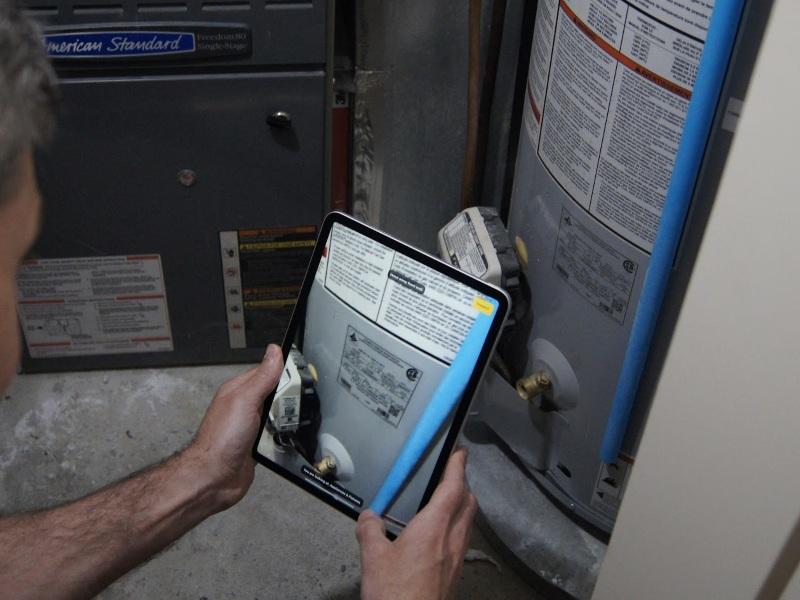
Townhomes and the first phase of a district geothermal heating and cooling system are being constructed at Edmonton’s sustainable Blatchford development. (Courtesy City of Edmonton)
Townhouses are rising and the first phase of a shared district geothermal heating and cooling system is commissioned and ready to go for the City of Edmonton’s long-awaited Blatchford project.
The city is the developer on the sustainable project on 536 acres of former municipal airport land 10 minutes north of the downtown core. The project was first approved by city council in 2014 after the airport closed, with a vision to be carbon neutral and to use 100 per cent renewable energy.
The first of the townhomes, built by Mutti Homes, are expected to be completed early in 2020.
By the time Blatchford is fully rolled out over the next three decades it will house 30,000 Edmontonians, Tom Lumsden, the city’s development manager for Blatchford, told a Canadian Urban Institute LSNetwork webinar this week.
In addition to its renewable energy utility and many sustainable features, Lumsden said the project also aims for fiscal responsibility.
“If you can’t make sense of this from a financial perspective, then it’s really a difficult thing to attach. I’m personally a taxpayer of Edmonton and therefore a shareholder and I want to see this thing work well,” he said.
Blatchford is human first
Larissa McClure, senior land development engineer for the Blatchford Redevelopment Office, said the city operates like a land developer on Blatchford.
The community is designed to be human first, with some streets restricted to pedestrian and cycle traffic. There are sustainable features including storm drainage provisions and cisterns which act as rain barrels for community gardens and orchards in the development’s green space.
A park in the centre of the development includes storm water pond and wetland features. Fifteen per cent of the project is green space.
Two LRT stations are planned for either end of the development in coming years. The project includes mixed retail/residential buildings on main traffic arteries, and housing including townhomes off the main streets. There will also be a market area for retail development and a public plaza for events.
The housing parcels are sold to private builders.
“We make sure they are aligned with the vision and helping us to achieve the vision of the neighbourhood,” McClure said.
Green building code in effect

Edmonton’s Blatchford development will feature an emission-free, geothermal heating and cooling system. (Courtesy City of Edmonton)
The builders must adhere to a green building code more sustainable than the normal building code in aspects including the building envelope, insulation, energy systems, heat recovery and appliance efficiency.
The key feature of Blatchford is its emission-free heating and cooling system.
A new municipal utility was established to meet council’s vision for Blatchford, said Christian Felske, director of renewable energy systems for the city.
The first stage of the district energy sharing system is a geothermal project. It extracts heat from a geo-exchange field under one of the project’s storm-water ponds, pipes the heated water to an energy centre and then circulates it to community buildings. In the future, the city plans to also gather heat from the sewer system and use other technologies as they become available and financially feasible.
Felske explained the utility works closely with the builders, who are required to provide compatible mechanical systems in the home to hook up to the shared utility.
Energy input to homes cut by two-thirds
“If you compare the typical townhome built in Edmonton … to a Blatchford townhome, the overall energy input, primarily in natural gas or electricity on the townhome outside of Blatchford, will be reduced by two thirds.”
That means a reduction of about 30,000 tonnes of greenhouse gas reduction, the equivalent to taking 6,000 vehicles off the road, said Felske.
It’s not mandatory for builders to connect to the system, but builders which do opt out must show their structures are built to net-zero standards.
“What we’ve seen through the first round of land sales and talking to the builders, is that no builder was actually projecting to not connect,” Felske said. “All the builders to this point have chosen to connect.”
The city has invested $19 million into the Blatchford energy utility so far. The full cost will be $93 million.







